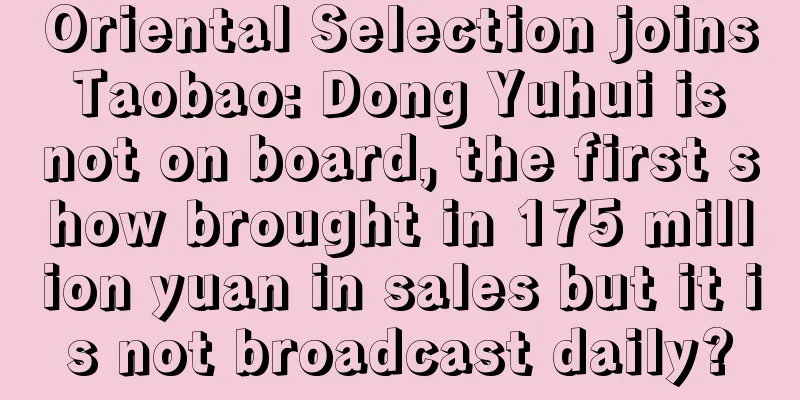In 2023, overseas advertising and marketing will have "three major changes"

After talking about "being under pressure" for too long, the global advertising industry has finally seen some gratifying changes this year. First, the market recovery has brought about significant business growth. In China, the advertising business of most Internet companies achieved year-on-year growth in the second quarter of this year. The three BAT companies have resumed double-digit growth, and Pinduoduo's advertising revenue growth rate has even reached 50%. The same is true overseas. In the second quarter, Google's advertising revenue finally returned to growth after two consecutive quarters of decline, and Amazon and Meta's advertising revenues were also higher than analysts' expectations. Secondly, the advertising industry has also seen more innovative breakthroughs this year. In China, Baidu and Alimama have both announced that AI is being fully commercialized, with updates and upgrades in advertising technology, applications, and solutions. ByteDance has also launched AI-based live broadcast script generation and intelligent film-making tools; Tencent is accelerating the completion of multiple commercial capabilities for video accounts and Xiaohongshu for live broadcasts; Kuaishou Magnetic Engine has launched new products and tools in the three aspects of traffic expansion, efficiency improvement, and productization; Bilibili and Zhihu are also working hard to build commercial capabilities based on their own characteristics. Overseas, major Internet giants have all used AI to innovate in advertising - Google, Amazon and Meta's AI-based intelligent advertising material generation products have covered a variety of content forms such as pictures, texts and videos, and Microsoft and Snap are trying to add advertising links to their ChatGPT-like conversational products. But in addition to being excited about new technologies, we also see the ups and downs of overseas marketing. Twitter lost a large number of advertisers after changing its name; Meta announced that Reels' annual revenue has reached tens of billions; Google's privacy sandbox has finally landed, and a new round of industry controversy has arisen; Pinterest and Amazon have joined hands to tell the story of "planting and weeding at the same time"; TikTok is "grasping both ends", making frequent moves in both marketing and e-commerce business... Overseas consumers’ media habits, mainstream media types, and business operations are all significantly different from those in China, which will be directly reflected in advertising products and businesses. Judging from these developments this year, it seems to have also brought inspiration to China. What are they doing specifically? What are their differentiated layouts? What are their action routes and directions? 1. AI is hot, but the Metaverse is coldThere is no need to elaborate on how hot AI is this year. Overseas giants with big models are moving very fast. Now many new AI-based advertising products and tools have been put into practical use. Overall, they include three categories: advertising content generation, bots, and advertising automation upgrades. It is natural to focus on intelligent content generation, because the core of generative AI is to learn from existing data and then generate new original content or products. At present, almost all overseas major companies such as Google, Amazon, and Meta have related products or tools. The main function is to generate text, images, 3D, video and other forms of content through generative AI, helping advertising creative producers optimize their creation and improve efficiency. Image source: Google AI official website For example, Google's Product Studio allows merchants to design the overall background of the product material by themselves; AI creative guidance can help merchants determine the brand logo, ad length and aspect ratio when used in YouTube. One of Amazon's major AI tools is to allow sellers to briefly input product information and automatically generate suitable advertising copy. In comparison, domestic and overseas giants have both similarities and different ideas in terms of AI intelligently generating advertising content: similarly, merchants now only need the most basic product information and materials to generate advertising copy and materials, significantly lowering the threshold. The difference is that domestic companies are more looking forward to using new technologies to directly generate commercially viable advertisements, and it is best to be able to deliver them with one click. However, overseas companies pay more attention to advertising creativity, so AI is more strongly used for assistance and optimization in the generation of pictures and videos. ChatGPT has attracted much attention, making the conversational chatbot product form the first to be widely implemented. In commercial applications, developers mainly insert the marketing information of advertisers into users' conversations. Microsoft's New Bing, Google's Brad and Snap's My AI all belong to this category. Currently, Microsoft and Snap have clearly stated that they have added advertising links to them. Take New Bing as an example. Users will see brand-related links in the body of the chat answer, and more will be displayed when you hover the mouse over the link. At the same time, users will also see the option of "Learn More" below the chat results, which is also the entrance to guide users to see more brand-related information. Snap's My AI is similar. For example, when users ask where to have dinner, they will provide links sponsored by local restaurants or takeaway apps. There are no similar products launched in China, and it is too early for this product to be widely used overseas: on the one hand, compared with mature search engines, this new product makes it impossible to control the time and location of advertisements, and the public has not yet used it frequently, so advertisers are still cautious. On the other hand, users instinctively want to avoid advertisements, so when Snap's My AI announced that it would test advertising, many users expressed dissatisfaction on social media. Image source: Microsoft Bing Blogs Advertising automation is a more extensive application of AI capabilities, mainly allowing AI to play a role in budget optimization, delivery process, data attribution and other aspects, to improve the efficiency and effectiveness of the entire advertising process. The Performance Max plan proposed by Google in 2020 is a typical case. This is a new goal-oriented advertising product with many innovative and upgraded features. For example, cross-channel advertising, advertisers only need to create one ad to connect to all Google channels such as YouTube, search, Discover, Gmail and Maps. For another example, advertisers can select goals such as sales, potential customer acquisition, local store visits and promotions at the same time, and almost all subsequent work can be completed by the system intelligently. Because advertising bidding, budget optimization, precise audience reach, advertising attribution and monitoring, these machine learning models can more accurately predict and plan how to achieve the best results. Image source: Google Ads official website Various AI-based innovations are in full swing, and the once popular "metaverse marketing" seems to have become a thing of the past. Last year, the advertising and marketing industry was excited about the "Metaverse" and had many fantasies about it: including how to create a more immersive shopping experience in the virtual world, whether brands can completely change the way they interact with consumers, and even help brands create exclusive online spaces. Among the tech giants, Facebook was the first to rename itself Meta last year and put its chips on the concept of virtual universe. But the popularity came and went quickly. The number of users of Meta's virtual world application is still relatively low this year, and overseas media generally commented that "the market is not yet fully ready to accept the vision it depicts." Naturally, brands are still waiting to see whether it can be used for advertising. It remains to be seen how long it will take for people to spend as much time in virtual environments as they do today on mobile devices. Meta cannot escape the fate of telling the new story of AI this year, following the industry's hot spots. Zuckerberg also mentioned in the second quarter earnings call that "we are riding two technological waves, the near-term artificial intelligence and the long-term metaverse", and AI is obviously more important. Meta has also launched AI Sandbox, which is mainly used for intelligent content generation. However, Meta's goal is more ambitious. It has previously stated that it wants to understand what productive functions are effective for advertisers and then incorporate them. Image source: Meta official website AI and the metaverse are not actually completely independent technologies, but it is obvious that generative AI can be applied faster and its application effects are more real and visible. The ups and downs of AI and the Metaverse are not just a change in trends. This phenomenon also reflects the pragmatic mentality of brands and merchants who are now more pursuing what new technologies can truly bring to their business. 2. Data privacy is an old problem, and new solutions are being promotedIn addition to keeping up with the "new hotspots", a number of overseas giants including Meta are also dealing with some "old problems" this year - data privacy. In 2021, Apple changed the iOS system and implemented a new privacy policy to limit the ability of applications to track user behavior. This affected the precise positioning ability and attribution accuracy of advertising platforms, and the conflicts between giants intensified. Meta has repeatedly criticized Apple's new privacy policy for its negative impact on the industry, and made it clear last year that it would lose $10 billion as a result. The reality cannot be changed. Meta has to step up the construction of products that can advertise without tracking users while criticizing Apple. This is still one of its key tasks this year. Recently, Norway has issued a ban on Meta's use of user personal data to place targeted ads. If Meta fails to comply with the regulations, it will be fined 1 million kroner (about 100,000 US dollars) per day. So for Meta, stepping up the development of new products is not only to adapt to Apple's changes, but also a time when it must make changes and upgrades to adapt to the current status of digital advertising data usage. While Apple’s new privacy policy has sparked huge controversy, Google’s Privacy Sandbox has also brought an impact on the industry. In 2019, Google announced that it would abandon support for third-party cookies and proposed the "Privacy Sandbox" plan, which aims to introduce newer, more private advertising solutions, limit the sharing of user information with third parties, and allow advertisers to push ads in a safer way without tracking users. In addition to search ads, most ads on the Internet rely on third-party cookies to track users, so disabling cookies will have a huge impact on many parties in the industry, and there are many voices of dissatisfaction in the industry. Previously, the head of Mobvista, a global advertising technology platform, told Deep Sound: "Unlike IDFA for Apple, for Google, which started with search business, online advertising has a higher strategic significance in Google's overall business, so we can see that Google is also widely soliciting opinions from participants in the ecosystem and promising at least a two-year buffer period." This year, the buffer period is coming to an end, and Google has officially begun to roll out the Privacy Sandbox to most users in the Chrome browser, and will achieve 100% coverage in the next few months. Previously, the Privacy Sandbox was just a concept, but now it has been put into practice. The browser will act as an intermediary between users and websites. Content involving personal privacy will be moved to the browser for local storage and processing, and other websites can only obtain partial information. Users can customize the advertising topics they are interested in, the relevance and measurement APIs they want to enable, or choose to opt out of these features completely. How to deliver precise targeted advertising in the future, the series of technical alternatives launched by Google still need time to verify. For advertisers, it is now time to identify more feasible solutions. Image source: Google The Privacy Sandbox official website Data privacy protection is an inevitable trend. As advertising giants already have new technologies, they must clearly understand the attribution and monitoring aspects of the data. What should advertising practitioners do? In fact, Google, Meta and Amazon have also made some preparations in recent years - investing in the MMM (Marketing Mix Modeling) marketing mix model. Simply put, the giants design a set of statistical analysis techniques to measure the impact of multiple channels and various marketing behaviors, including their own, on overall sales and ROI. This model is not new. It has been used as early as the 1960s. However, due to the rise of digital advertising, this method that cannot be located, tracked and measured very accurately has gradually become outdated. However, although it is an old method, the data is always fresh and available. Amazon can provide data from the world's largest retail media network for its MMM model, and Meta can provide data from billions of users in its many apps; Google can also use data selected from YouTube, search, Chrome and maps. The giants launched this model to "open source" the data to a certain extent for brands and advertising and marketing agencies to use. Whether it is the users' own increased awareness of data privacy protection or the data protection laws that have been put in place in various countries, they have pointed out the direction for Internet advertising. Although the controversy caused by the giants still exists, the wheel of data privacy protection has been rolling forward under the premise of compliance. 3. Overseas countries also need to “plant and harvest at the same time”The advancement of the new data privacy policy has indeed had a significant negative impact on social platforms such as Meta that mainly do targeted advertising. However, as the saying goes, "after all the darkness comes the light", video has become a mainstream trend in the overseas market. Overseas users are also investing a lot of time in short video content, "planting grass" for products from short and fast video ads, and placing orders based on their interests. Video ads have become popular, replacing part of the social advertising needs that advertisers once had. Meta's app Instagram's short video feature Reels (built into Instagram) is a beneficiary. According to Zuckerberg's second quarter earnings call this year, Reels currently has more than 200 billion views and 2 billion shares per day. Reels has made good progress in commercialization, with more than three-quarters of Meta advertisers using Reels ads, and its annualized revenue has risen from $3 billion last fall to $10 billion now. Image source: Instagram official website Reels is not just about advertising, it is also making great strides in overall commercialization. Instagram has long had an e-commerce business layout, and this year it has gradually moved from "external links" to "closed loops". Users can watch short videos on Instagram, and then directly click on the link to jump to the brand merchant's store to make a purchase, thus achieving "planting and weeding in one". TikTok's thinking is the same. Starting in August this year, TikTok began to step up its closed loop, and officially launched its e-commerce service in the United States on September 12. Its e-commerce ecosystem is accelerating its construction and improvement. Since "marketing" and "sales" are always closely connected and drive each other, TikTok's advertising business also has new functions and products. As early as April, TikTok began inviting new sellers to conduct internal testing. TikTok also launched a new influencer marketing channel at the same time, testing an affiliate marketing plan for creators, that is, creators can earn commissions by promoting products for brands. Recently, TikTok has also started to do search advertising, which is exactly the same as the domestic Douyin idea, that is, after the user searches, the brand's video ads will appear together with the natural content. Short video platforms have linked advertising and e-commerce within the site. Traditional e-commerce platforms have not ignored the general trend of using content to promote products. Realizing "planting and pulling in one" through cooperation has become Amazon's core idea. In April this year, Amazon and Pinterest started to connect. Pinterest is a social content platform that mainly features waterfall images. Users usually share fashion content and interior design inspiration on the platform, and many brands have also settled in and made plans early. Similar to the Chinese version of Xiaohongshu, users are generally more receptive to shopping-related content, which is called "grass-planting attribute" in the mainstream Chinese concept. After cooperating with Amazon, users will see more Amazon ads on Pinterest, and when they click on them, they will be directly redirected to the Amazon purchase page to quickly "pull out the grass", achieving a more seamless purchasing experience. Of course, for Amazon, the more such cooperation, the better. In addition to cooperating with Pinterest, Amazon has also expanded its advertising to content sharing apps and websites such as BuzzFeed, Hearst Newspapers, Raptive, Lifehacker and Mashable under Ziff Davis this year. Amazon also mentioned that it has "started the journey of product promotion." Such cooperation will naturally bring about a "win-win" situation. Many Amazon sellers have not been familiar with how to conduct marketing operations on social media. Through cooperation, they can directly cover various social content platforms, opening the door to increased exposure and traffic. For content sharing platforms such as Pinterest, this can also help the platform attract more users who are interested in shopping. If the user base can continue to grow as a result, more brands will naturally be more willing to advertise, and the platform's advertising revenue will increase accordingly. Several major domestic e-commerce platforms are also cooperating extensively with social content platforms such as Bilibili, Xiaohongshu, and Weibo. A large number of creators on content platforms produce marketing content, and then set up jump links, so that users can go to the product details page of the e-commerce platform to make purchases with one click. However, domestic e-commerce platforms hope to be able to create content themselves. Currently, Taobao, JD.com, and Pinduoduo all have short video content, and one of Taobao’s major strategies this year is to fully contentize. Short videos, live streaming slices, and live streaming rooms are all important content on the site. From the above, it can be seen that what overseas Internet platforms do in the advertising field is almost the same as that of domestic giants. In fact, domestic advertising and marketing concepts are even one step ahead, with more concepts and gameplay, and are more complex overall. For example, domestic content platforms have long been exploring closed-loop e-commerce and integrating marketing and operations within the site. For another example, domestic and overseas platforms are now more likely to use AI technology to optimize specific links, and Baidu has recently launched the world's first AI Native marketing platform Qingge, which completely changed the traditional delivery model with a natural language dialogue model. Advertising is always a ripple effect, both at home and abroad. Today, advertising is increasingly becoming a complex of creativity, technology, data, strategy, media, services, etc., which involves more roles to contribute to the same business. With the support of new technologies such as AI, the rational use of data, and more strategies and trends that are close to business growth, the advertising industry as a whole is reducing costs and increasing efficiency, and can obtain positive incentives. Author: Lv Yue Source public account: Deep Echo (ID: deep-echo), global vision, value perspective |
<<: In 2023, who still "believes" in the anchor?
>>: Ten years of experience summary: 9 tips for international SaaS startups
Recommend
The market offers free cooking services! A number of restaurants are completely panicked...
Recently, the vegetable market has evolved and lau...
Top brands "go to the countryside" and "hunt" for wealthy women in county towns
"Top brands are sinking, and county consumpti...
Zhuang Jun: Xiaohongshu sold 4 million bath oils, the key is to do these 6 things well
The emotional body care brand successfully found p...
How do securities firms implement companion services based on customer journey orchestration?
The key to achieving wealth management transformat...
Will the advertising industry still be good in 2023?
According to Buffett's concept of "corpor...
“Eat big potatoes during the Great Heat”, what else does McDonald’s do besides its solar term marketing?
With the arrival of the last solar term of summer,...
2022 Annual Review (Part 2): The underlying logic of good content, good operations, and good results
In the era of scarce traffic, good content is stil...
It is unknown whether Luckin Coffee’s new product will be a success, but its collaboration with “Black Myth: Wukong” has been a big hit
Luckin's marketing level is still online. &quo...
What are the fees for individual cross-border e-commerce? How can individuals do cross-border e-commerce?
With the rapid development of cross-border e-comme...
What are the prospects for eBay operations? Detailed answers
Online stores really cannot do without operations....
Will Amazon's estimated tariffs be refunded? What does estimated taxes mean?
Amazon shopping requires tax, and the estimated im...
What should I do if a cross-border e-commerce company sends the wrong goods? What are the situations?
There are many merchants doing cross-border e-comm...
How are Amazon ratings calculated? What is a high rating?
Amazon store ratings refer to the process by which...
How can a new Shopee store break zero? What are the methods?
After registering and opening a store on the Shope...
WeChat quietly launched new regulations, making it difficult to migrate subscription accounts to service accounts!
WeChat recently introduced a new rule that restric...









